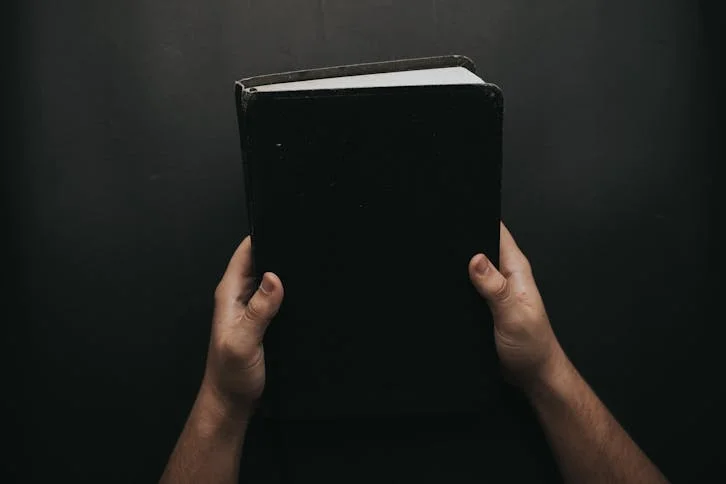
How to cite a poem: the ultimate guide on how to format poem citations
Providing a correct citation is every student’s trial and a test of endurance if not handled properly. No matter how many articles have been written and published about the challenges of poem citations, the subject still remains complicated. Citing a poem can be tricky for several reasons. You are not only required to respect and acknowledge the contribution of others but also help your audience pinpoint the sources efficiently. Citing a poem features several key elements that are essential for preserving your academic integrity. For instance, not knowing how to cite a poem in a specific formatting style can lead to the inability to express your thoughts freely and use other writer’s achievements to construct your own research.
The basics of citing a poem: purpose and key elements of poem citations
Citing a poem is crucial for the academic integrity of a creative text. It shows the audience how much you engaged with the original work and acknowledges the contribution of earlier researchers. Achieving mastery over your poem citations means the readers can locate the sources instantly, with no need to provide additional support for your arguments and theoretical claims.
Knowing how to cite a poem in writing will convince anyone getting familiar with your work that you have analyzed the text meticulously. Readers will understand that you took your time demonstrating respect to the author in question while recognizing their creative endeavors without falling into the trap of unwanted plagiarism. In rare cases that you find it impossible to follow through on these academic demands, reputable online paper writing services will help you craft a proper citation with ease.
Citing a poem is always associated with using specific elements that accompany the citation:
- Poet’s name. The poet’s first name should be followed by the poet’s last name. Make sure you have used the author’s full name and not the initials.
- Tie tlof the poem. The title of the poem can be italicized or put in quotation marks. The marks are reserved for poems that are part of an extensive collection of creative work, while shorter poems are generally italicized.
- Line numbers. You should always include the line numbers in your poem citation. This will help your readers locate the exact line easily if they want to analyze the poem independently.
- Publication information. The extent of the publication information that you will need to provide will largely depend on the demands of a specific institution. Sometimes, you are allowed to forego the editor’s or the publisher’s name, with only the name of the publishing house required.
Writing tip from SpeedyPaper
How to cite a poem in MLA format: basic instructions
With various citation styles for in-text poem citations, MLA stands out as one of the most commonly used in academic writing. Here is how to cite a poem in MLA format while adhering to the required academic standard:
MLA in-text citations for poems
Knowing how to cite a poem in MLA style means the inclusion of the poet’s last name and the line numbers of the quoted content. If the quotation that you use in writing is concise, you can use parentheses after the quote. However, if you have already mentioned the poet’s name in the text, only the line number is required.
Quoting short passages and long passages
When citing a research paper, you should always integrate the quote into the text in a way that seems organic and ensures the natural flow of the text. The same is true for MLA poem citations. Still, there is a distinction between quoting short and longer passages when citing a poem in MLA:
- Short passages. When quoting fewer than three lines of the poem, you should integrate the quote into the text directly. You should also include quotation marks in the text.
- Longer passages. Do you know how to cite a poem in MLA format if the passage spans more than three lines? The citation should always start on a new line, with double spacing and no quotation marks to frame the passage. The author’s last name is always placed in parentheses.
Examples of MLA poem citations
Whether you decide to cite a dictionary or a poem that you have used for your research, adhering to the proper structure is paramount. Given that MLA formatting will always demand students to paraphrase or otherwise give credit to the original author, knowing how to turn citations into an integral part of the text is a skill that you need.
- A poem from a larger collection. Plath, Sylvia. “The Iceberg”. The Complete Works of Sylvia Plath, edited by Joseph Munroe, Modern Library, 1998, pp. 5-16.
- Short passages. Sylvia Plath’s fascination with autumn is seen in the lines, “In the month of red leaves, I climb to a bed of fire” (Plath 2).
- Long passages. And in this tub, two knees jut up like icebergs; when my feelings rise, I feel the shudder - compromise? Or leave it all, or leave it be - tonight, my love, you are feeling free. And at this moment, we decide that one of us will bleed - oh my; This crystal floor and crystal glass exists, it seems, as if for us (Plath 18-24).
- A poem with an author’s name mentioned in the text. As Sylvia Plath writes, “All of my otherness consumes me fully with no chance of turning back” (Plath 18).
- A poem is quoted directly in the text. Sylvia Plath describes an unsettling atmosphere that creeps up on the readers and frames the edges of her haunting writing: Give me a sign that you are alive; Signal to me or drop me a line; As long as I’m here, in this mountainous range; All is deliberate, whimsical, strange (Plath 22).
How to cite a poem in APA format: main rules of formatting
As you learn how to cite a poem in APA format, you should remember the basic rules of APA and how it can be utilized in academic texts:
Formatting poem citations in APA
Educating yourself on how to cite a press release or a poem correctly is an ongoing process that requires ultimate attention to detail. In APA style, citing a poem is largely centered on providing substantial information about the poem’s publication. The general format should always include the author’s last name, first initial, publication date, title of the poem in italics, title of the collection, page numbers, and publisher.
In-text citations for poems in APA
How to cite a poem in APA format if you have an in-text citation that needs to be inserted directly? First of all, you should include the author’s last name and the year of publication. Secondly, you should always write the page number from which the quotation was taken. Make sure that you know where the citation was taken from (a separate poem, a larger collection of poems, or an anthology).
Quoting short and long passages
When you cite a poem that is less than 40 words, you should always enclose the quotation in double quotation marks and insert it in the text. If you have a passage that is larger than 40 words in length, you should always introduce it with a colon and start a new line with no quotation marks included.
Examples of APA poem citations
- Standard APA citation: Plath, S. (1998). Summer and other charming nuisances. Selected poems of Sylvia Plath (pp 28-29). Cambridge.
- In-text citations in APA: (Dickinson, 1998, p.26), (Dickinson, 1998, lines 2-8).
- Short passages: Dickinson (1998) says, “Just because I let this feeling overcome me, I knew that it was trapped inside” (p.28)
- Long passages: Dickinson (1998) explores the complexity of one’s feelings in full detail:
When all the masks have fallen off
And we are left alone
And in this sullen, sudden cough
We know the sullen tone. (p.26)
How to cite a poem Harvard: essential formatting guidelines
Harvard citation format for poems
How to cite a poem Harvard and come across as an advanced scholar? Just like knowing how to cite Wikipedia, one should always select a relevant source and give credit to the original author. In the case of the Harvard style of formatting, in-text citations are structured based on the anthology-referencing format. This means you should always include the author’s last name and initials, the year of publication, the title of the poem, the editor of the collection, the page range, and the publisher. Harvard style is known for its transparency and conciseness, so all of your references should be accurate to help the readers locate them easily.
In-text citations for poems in Harvard
If you know how to cite a poem Harvard, you should also be aware of the complexities of an in-text citation in the same format. The author’s last name, the year of the publication, and the page number should all be included in the text to make it complete. In case there is a specific stanza that you want to direct your audience to, make sure that your poem citations include the same line.
Examples of Harvard poem citations
Some of the examples of Harvard poem citations can be found below:
- Poem in a collection. Frost, R. (1964) The icy paradise. In: Frost, R. The entire collection of Robert Frost (p.16). London: Publishing House.
- Poem in an anthology. Hughes, L. (1994) How I defied gravity. In: Hutchinson, L. (ed.) Poetry of the darkest era (pp.10-11). London: Penguin Books.
- In-text citation. (Frost, 1993, p.26)
Writing tip from SpeedyPaper
How to cite a poem: additional citation guides
How to cite a poem in Chicago style
How to cite a poem in Chicago style? Chicago-style poem citations are based on two primary principles: the application of an author-date system and the application of the notes and bibliography system. The notes system implies that the poem will first appear in the footnote, which is followed by the appropriate bibliography entry. The entry should always contain the author’s name, the title of the poem, the title of the collection, the place of the publication, and page numbers.
- Footnote example: Emily Jonas, “The serenity and prosperity of my quiet life,” in The Complete Tales of Emily Jonas, (Boston Little, 1965), p.22.
- Bibliography example: Jonas, Emily. “The serenity and prosperity of my quiet life.” In The Complete Tales of Emily Jonas. Boston Little, 1965.
How to cite a poem in Turabian style
If you don’t know how to cite a poem in the Turabian style, you need to pay attention to non-published academic works, where this style is mainly prevalent. A poem citation in Turabian can also be found in some of the student works that date back a decade or two, as it was at its peak in earlier academic publishings. The poem citations in Turabian combine a blend of the Chicago style with the use of footnotes and a bibliography entry at the end of the paper. Here is how the standard Turabian poem citation would look like in academic work:
- Footnote example: Richard Artich, “Thunder and Rolling Sound,” in The Works of a Poet, ed. J. Janussi (London, 1999), 122.
- Bibliography example: Artich, Richard. “Thunder and Rolling Sound.” In The Works of a Poet, edited by J. Janussi, 122. London, 1999.
FAQ
How to properly cite a poem?
In order to cite a poem in a proper way, you have to follow a certain set of academic principles: include the author’s name, the title of the poem, the publication date, and relevant line numbers if you want to direct your readers to a specific line. Additional citation details will depend on the formatting style.
What is the difference between short and long poem citations?
If you want to cite a poem with less than three lines (short citations), you need to include the quotation in the text with quotation marks. If the poem you cite has more than three lines (long citations), you should always insert the citation as a block quote with no quotation marks. In some cases, you will be asked to preserve the original structure of the poem.
How to cite a poem title?
When you cite a poem from a large collection or anthology, you need to place the title of the poem in quotation marks. If you cite a poem from book-length works, the title of the poem should always be italicized.
Do I need to cite the author for every line quoted?
You do not need to provide a poem citation for every line that you quote throughout the text. However, you still have to provide a citation whenever a new passage begins or at the end of the quoted materials, especially if you quote multiple lines at once.
Comments (15)
James Apr 04, 2025
How should I cite a poem if the lines I’m referencing come from different stanzas scattered throughout the text? And thank you for this article!
Alexander Apr 07, 2025
Can I use ellipses (…) in poem citations if I want to drop some part of a line or stanza? Does it affect formatting in MLA or APA?

Emily Harper Apr 07, 2025
Yes, ellipses are acceptable for omitted words in citations. MLA and APA formatting explicitly allow them, clearly indicating skipped content without affecting credibility.
Charlotte Apr 08, 2025
What’s the best approach to citing a poem with no known author or uncertain publication date? I usually have a problem with that.

Emily Harper Apr 08, 2025
Use poem’s title if author/date unknown (MLA/APA), e.g., ("Title," n.d.). Clarify the lack of details in bibliography or notes section to maintain credibility.
Summer Apr 09, 2025
If I analyze a poem thematically without quoting specific lines, do I still need to include a formal citation?

Emily Harper Apr 09, 2025
Yes, a citation referencing the entire poem or its collection should still be included to acknowledge the source.
Aby Apr 10, 2025
Is it appropriate to cite translated poems, and should I mention the translator in the citation?

Emily Harper Apr 10, 2025
Yes, always mention translators clearly in your citations to acknowledge their work. Format example: (Author, Year, trans. Translator).
Jason Apr 15, 2025
Do I need to repeat a citation if I reference the same poem multiple times throughout my paper?

Emily Harper Apr 15, 2025
Yes, you should repeat citations for clarity when referencing again after other sources; use abbreviated forms or "ibid." (if allowed by style guide) to keep concise yet clear.
Lila Apr 16, 2025
What’s the best way to cite a poem that appears in a multimedia format, like a spoken-word performance or podcast?

Emily Harper Apr 16, 2025
Cite the version you accessed — include performer, platform, and date. Mention differences from the print version in your analysis if relevant to interpretation.
Ethan Apr 17, 2025
This article was really helpful! I’m wondering, in longer literary essays, is it better to group multiple short citations together or reference them each time separately?

Emily Harper Apr 17, 2025
Reference each instance separately for clarity, especially if analyzing different parts. Group only when examples follow the same point and come from nearby lines.
Zoe Apr 21, 2025
When analyzing structure or rhyme, can I break lines mid-sentence in a citation, or should I always preserve the line breaks as written?

Emily Harper Apr 21, 2025
Preserve original line breaks to respect poetic form. Use slashes (/) for in-line citations and block formatting for longer excerpts to show structure.
Madeline Apr 25, 2025
How do you handle citations when the poem is untitled or only identified by a number or first line?

Emily Harper Apr 25, 2025
Use the first line in quotation marks as the title, or the number if that’s how it’s labeled. Example: (“Shall I compare thee,” line 3).
Dylan Apr 28, 2025
What’s the best way to cite poems that are originally in another language but widely quoted in English?

Emily Harper Apr 28, 2025
Cite the translator if known. Add the original author, and mention it’s a translation.
Skylar Apr 29, 2025
How do citations change if I’m paraphrasing a poem rather than quoting it directly?

Emily Harper Apr 29, 2025
You still cite the line or stanza if possible. No quotation marks needed, but credit is essential.
Georgia Apr 30, 2025
For poetry with a non-traditional structure (like no line numbers or stanzas), how should we approach citations to stay accurate?

Emily Harper Apr 30, 2025
Use page numbers or section titles if available. If not, describe location: (Smith, “middle of poem,” emphasis added).
Calvin May 01, 2025
Do you recommend any tools or websites that help automate or double-check citation formatting for poems?

Emily Harper May 01, 2025
EasyBib, Zotero, Purdue OWL.
Arthur May 05, 2025
Could you explain how to handle poem citations when integrating them into multimedia academic projects (like video essays or interactive presentations), where both visual and audio elements reference the poem?

Emily Harper May 05, 2025
Display the full citation on-screen (author, title, line numbers) and verbally credit it in narration. For example, show “Sylvia Plath, Lady Lazarus, lines 5–10” while reading or referencing aloud.




Emily Harper Apr 04, 2025
Cite lines clearly by stanza and line numbers separated by commas (MLA), e.g., (lines 2.4, 4.1-3). Ensure readers easily locate your references.